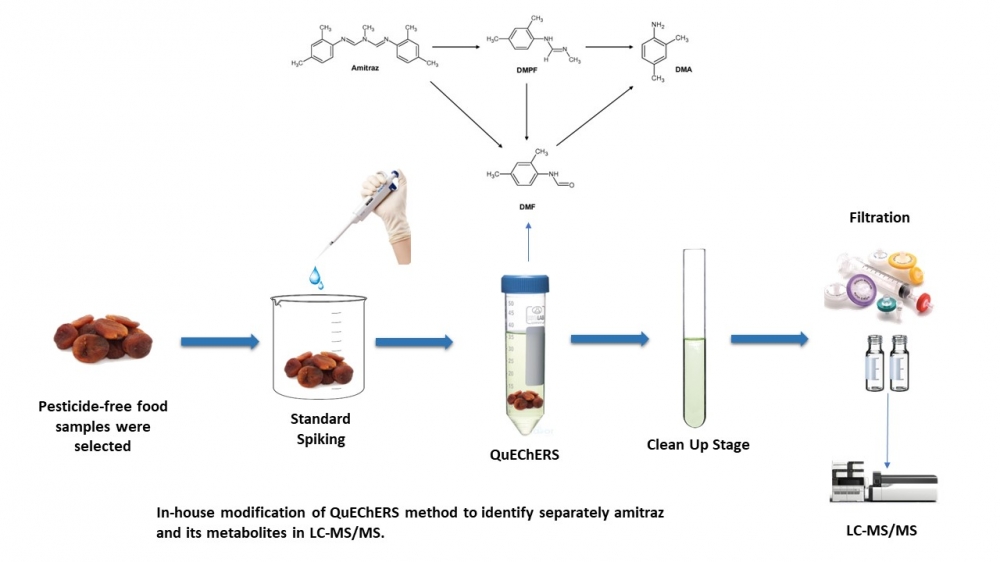JOURNAL 3082
Records of Agricultural and Food Chemistry
Year: 2024 Issue: 3 Special Issue: Abstracts 3rd. TCS, International Food Chemistry Congress February 29-March 03,2024 Antalya Türkiye
p.63 - 63
Viewed 1120 times.
GRAPHICAL ABSTRACT

ABSTRACT
Amitraz is a broad-spectrum insecticide and acaricide used in veterinary medicine, agriculture, and horticulture. It belongs to the formamidine pesticide family, most of which (like chlordimeform, formparanate, and chlormebuform) are no longer in use, except amitraz and formetanate, which are particularly effective against pests resistant to organophosphates and carbamates. An accurate method was developed for the determination of amitraz and its metabolites N-[2,4-(dimethylphenyl)-.N-methylformamidine (DMPF), 2,4-dimethylformamidine (DMF), 2,4-dimethylaniline (DMA). There are two types of methods for the determination of amitraz. The first one is multi-residue methods which incorporate amitraz together with other pesticides, focused on the determination of only parent amitraz. The other methods are suitable for the direct determination of amitraz and/or its degradation products. However, most of these methods include the determination of amitraz and its only well-known metabolite DMA; other methods include the indirect determination of amitraz by hydrolyzing amitraz to its final metabolite DMA. This study aims to determine whether amitraz, which is not approved for use in apricot food matrices, is degraded in the pesticide mixture and is detected at incorrect concentrations as a result of enriching the concentration of its metabolites, using LC-MS/MS in terms of the EN 15662:2018 standard method and the QuEChERS method. Quantification calculated using matrix-matched standards calibration by using three orders of magnitude. This work reports the use of QuEChERS method for qualification of amitraz and single in house modified method for quantification of amitraz and its metabolites in apricots [1–3].
KEYWORDS- Amitraz
- pesticide
- QuEChERS